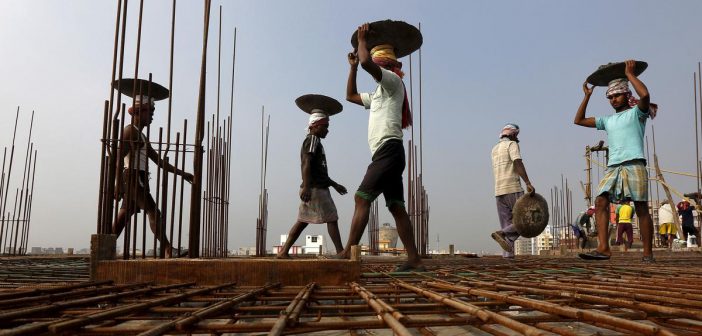The Indian government is preparing to transition from a minimum wage framework to a living wage system, marking a significant policy shift aimed at improving the standard of living for millions of workers across the country. This move is expected to have far-reaching implications for various sectors of the economy, the workforce, and the nation’s overall economic health.
Understanding the Shift: The current minimum wage in India is often insufficient to cover basic living expenses, particularly with rising inflation. The minimum wage, determined by labor productivity and skill levels, has long been criticized for failing to meet workers’ essential needs such as housing, food, healthcare, and education. In contrast, a living wage is calculated based on the cost of living, aiming to ensure that workers can afford these necessities.
This policy change is part of India’s broader goal to achieve the United Nations’ Sustainable Development Goals (SDGs), particularly the target of eliminating extreme poverty by 2030. The shift is also seen as a response to growing income inequality and stagnant wage growth in the country, with the top 1% of India’s population controlling a significant share of the national income.
Impact on Workers: For the workforce, especially the unorganized sector that comprises nearly 90% of India’s labor market, this transition could be transformative. It is expected to lift millions out of poverty and improve their overall quality of life. The living wage system would also address regional disparities in wage levels, offering more uniformity across different states and sectors.
Economic and Industrial Implications: While the living wage policy is a positive step towards social equity, it presents challenges for businesses, especially small and medium enterprises (SMEs). Higher wages could increase operational costs, potentially leading to higher prices for consumers or reduced profit margins for businesses. Some industries might also face challenges in maintaining competitiveness, particularly in sectors that rely heavily on cheap labor.
However, proponents argue that higher wages could boost domestic consumption, as workers with better purchasing power would spend more, thereby stimulating economic growth. Additionally, improved wages could lead to a more motivated and productive workforce, reducing turnover rates and enhancing overall business efficiency.
Challenges in Implementation: The implementation of living wages is complex and requires careful planning. The government will need to establish a suitable framework for determining and enforcing living wages across different regions and industries. The International Labour Organization (ILO) is expected to play a key role in providing technical assistance for this process. Additionally, the government must ensure that the transition does not lead to unintended consequences, such as job losses or inflationary pressures.
Conclusion: India’s move towards living wages is a bold and necessary step towards reducing poverty and improving the standard of living for its workforce. However, its success will depend on the government’s ability to balance the needs of workers with the economic realities faced by businesses. As India moves forward with this policy, it will serve as a critical test case for other developing nations grappling with similar challenges.
This shift could be a game-changer for the Indian economy, potentially setting the stage for more equitable and sustainable economic growth in the years to come.






